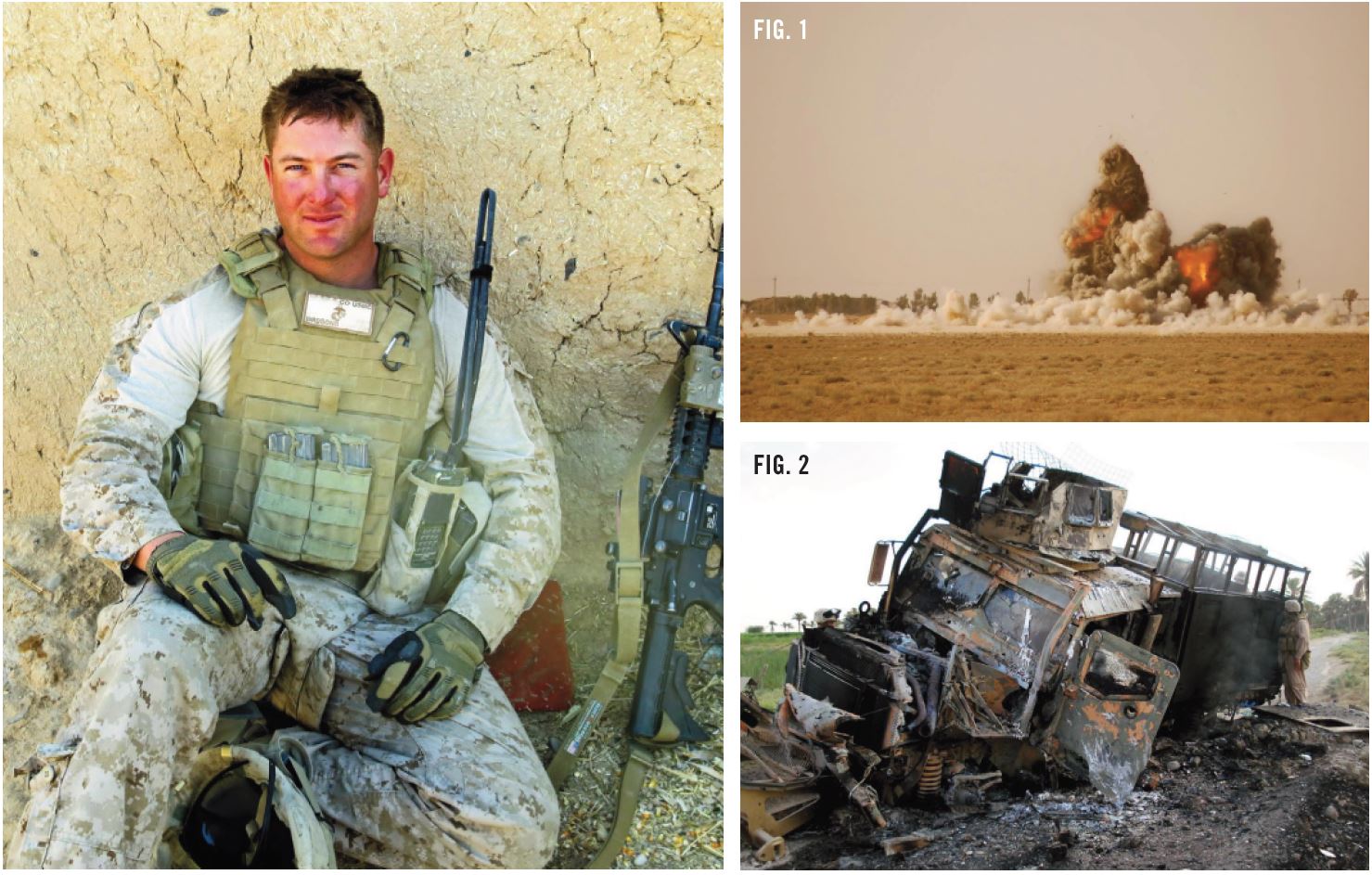
SIGNATURE DAMAGE: Author's son Sergeant Shane Birdsong (Above, left) in Afghanistan. He photographed two concussive IED blasts while on his first tours in Iraq — a controlled blast by Marine combat engineers (Fig. 1), and IED blast damage to a mobile patrol in Anbar Province, Iraq (Fig. 2).
The next photo (Figure 2) depicts a less fortunate mobile patrol in Anbar Province, Iraq. This squad, while on patrol, took the full impact of a buried command-detonated IED that destroyed the vehicle and wounded all occupants – the driver, the squad leader, the A-gunner, and eight Marine infantrymen in the rear of the truck. All were medically evacuated with moderate to severe physical wounds and TBIs. All the Marines survived. The IED consisted of an explosive wired to a 155 artillery round and propane tank. The propane tanks used in these IEDs are like a standard American BBQ grill propane tank, which can produce horrendous concussive force if ignited by explosives.
Brain damage from such blasts results in physical and psychological injuries that regular, pill-driven medicine attempts to treat and heal. Yet, rather than prescribing drugs, we believe there are better ways to address these injuries, which are done at the Rocky Mountain Hyperbaric Institute. However, before we continue to present the benefits and success of HBOT, it is essential to consider the brain and its complexity. Only then can we examine just how oxygen treats and heals TBI and also facilitates the treatment of PTSD.

HEROIC MARKER: TBI-PTSD Signature Wound logo design, courtesy of Rick Baum, USMC Veteran, Minister and Veteran Advocate for the Rocky Mountain Hyperbaric HBOT clinic.
THE HUMAN BRAIN: INJURY AND RECOVERY
The most fragile, complex, and vulnerable organ in the body is the human brain. It controls our thoughts, emotions, behavior, movements, and sensations. It processes what we think, feel, and create with billions of neurons and their dendrite forest. They work together to receive and exchange data and then act as the interpreter of our senses to control and direct all our movements. Even our sleep and breathing depend on this healthy condition. Each of the brain's five lobes has specific functions that we rely on to live, function, and experience life.
The brain’s gelatinous mass is encased in a rigid skull for protection (see Figure 3, next page). It wards off mild concussions and blows to the head that injures us when we fall or “have our bell rung” in a boxing ring. In his description of the human brain and how it functions, hyperbaric treatment pioneer, Dr. Paul Harch employs a brain-sized stalk of broccoli (see Figure 4, next page). as he shows its many thousands of tendrils and then describes how a brain’s dendrite forest reacts to a hard blow or a serious IED blast (see Figures 1 and 2)